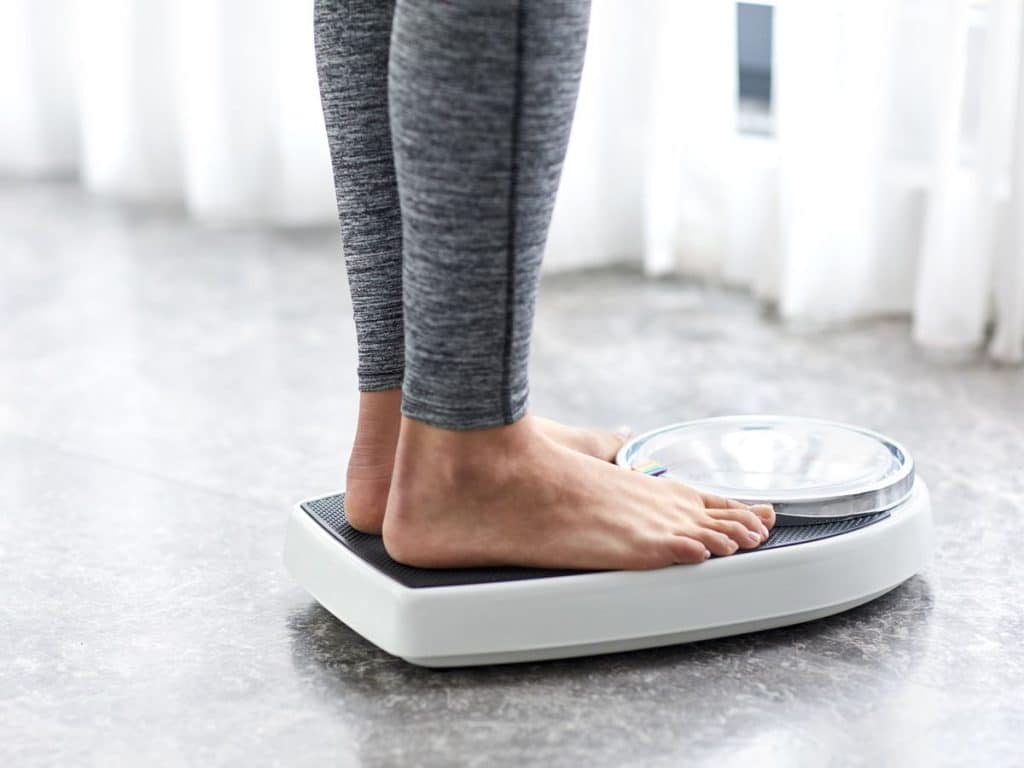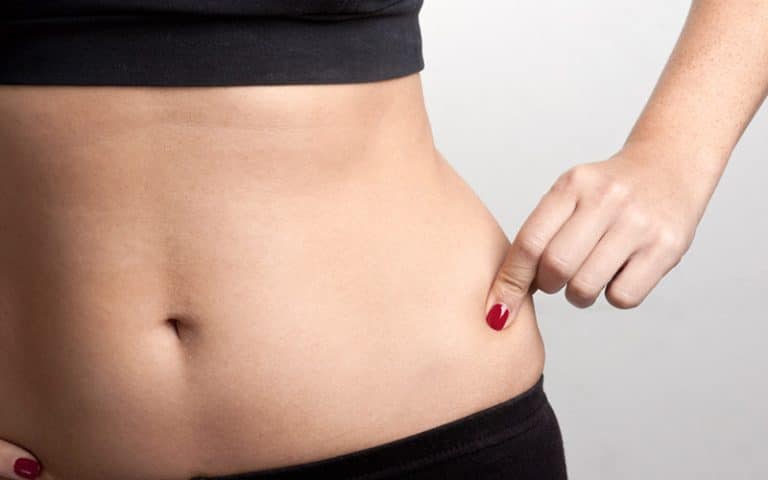How Much Weight Can You Lose from Liposuction? Find Out Now!
Key Takeaways
- Liposuction is primarily a body contouring procedure, not a weight loss solution; typical weight loss is around 2 to 5 pounds, and it targets subcutaneous fat as part of cosmetic surgery.
- The procedure is most effective for removing stubborn fat that doesn’t respond to diet and exercise, such as with a tummy tuck or lipo, rather than reducing overall body weight.
- Candidates with a stable BMI and good skin elasticity see the best results from cosmetic surgery; it’s not suitable for those significantly overweight with excess subcutaneous fat.
- Liposuction, a weight loss procedure, can target specific areas like the abdomen, thighs, arms, and neck, enhancing body shape and proportions by removing subcutaneous fat.
- Post-treatment recovery involves rest and wearing compression garments; maintaining lipo results requires a healthy lifestyle and regular exercise to achieve body goals.
- Always consult with a qualified plastic surgeon to understand the risks, benefits, procedures, and realistic outcomes of liposuction for your body goals.
Understanding Liposuction
Body contouring
Liposuction is a body contouring procedure. It is not designed for weight loss. Surgeons use it to shape and sculpt the body.
Removing fat cells
Liposuction removes stubborn fat cells permanently. These fat cells do not return once removed. This makes lipo effective for targeting specific areas.
Ideal candidates
Liposuction works best for individuals near their ideal weight. It helps eliminate specific fat deposits that are hard to lose with diet and exercise alone through lipo treatment at Gotham Plastic Surgery.
Procedure details
The surgeon inserts a thin tube called a cannula into the targeted area during lipo treatment in plastic surgery. They then suction out the fat cells through this tube during the lipo treatment. The procedure can take several hours depending on the amount of fat being removed during the treatment episode.
Recovery time
Recovery from liposuction varies by person. Most people can return to normal activities within a few days after treatment for the episode. Full recovery from the treatment episode might take weeks or even months, depending on the extent of the surgery.
Risks involved
As with any surgery, there are risks involved in liposuction treatment. These include infection, bruising, and swelling. It’s important to consult with a qualified surgeon to understand all potential risks.
Weight Loss Potential
Average Weight Loss
The average weight loss from liposuction is around 5 pounds. The FDA has approved a maximum of 11 pounds for this procedure. The amount of weight you lose depends on various factors, including the specific areas treated and the volume of fat removed.
Liposuction targets stubborn fat deposits that don’t respond to diet and exercise. It removes these fat cells permanently but doesn’t result in significant weight loss.
Inches Over Pounds
Success from liposuction is often measured in inches rather than pounds. Many patients see a noticeable reduction in body circumference and improved body shape. This change can lead to better fitting clothes and enhanced self-confidence.
For example, someone might lose several inches around their waist or thighs without much change in overall body weight. These improvements contribute to achieving one’s body goals more effectively than focusing solely on the scale.
Contouring and Reshaping
Liposuction’s primary goal is to reshape and contour the body. It provides a more aesthetically pleasing figure by targeting specific areas like the abdomen, thighs, arms, or back.
This procedure helps improve body mass distribution, making your silhouette look more balanced and proportionate. The results are often dramatic in terms of appearance even if the actual weight loss is minimal.
Maintaining Results
Maintaining results after liposuction requires a commitment to a healthy lifestyle. Following a balanced diet and regular exercise will help keep the new contours intact. Without these efforts, remaining fat cells can expand, potentially reversing some benefits.
Patients should aim for their goal weight before undergoing liposuction for optimal results. This ensures that any further weight fluctuations post-surgery won’t significantly impact the new body shape.
Emotional Impact
Many people experience an emotional boost after liposuction due to improved self-image and confidence. Wearing clothes that fit better can positively affect daily life interactions.
However, it’s essential to have realistic expectations about what liposuction can achieve. It’s not a substitute for healthy living but rather an enhancement tool for those already close to their ideal body shape.
BMI and Its Role
Patient Eligibility
BMI, or Body Mass Index, is crucial for determining a patient’s eligibility for liposuction. Surgeons use BMI to assess if someone is a good candidate.
A healthy BMI ranges from 18.5 to 24.9. Patients with a BMI above this range may face higher risks during surgery. Those with extremely high BMIs might not be suitable candidates.
Potential Outcomes
Patients with a higher BMI can see more noticeable results post-op. However, there are limits to the amount of fat that can be safely removed in one session.
Surgeons typically remove up to five liters of fat per procedure. Removing more than this can lead to complications such as fluid imbalance and infection.
Health Risks
Surgeons also use BMI to evaluate overall health risks. A higher BMI often means greater risks during and after surgery.
High BMI can increase chances of complications like blood clots and anesthesia issues. This makes it essential for surgeons to consider BMI when planning the procedure.
Safety Measures
To ensure safety, doctors may recommend patients lose weight before undergoing liposuction. This helps lower their BMI and reduces surgical risks.
Differentiating Vital and Stubborn Fat
Essential Fat
Essential fat is necessary for survival. It supports bodily functions. This type of fat is found in organs, muscles, and bone marrow. Women need more essential fat than men due to reproductive functions.
Stubborn Fat
Stubborn fat refers to the unwanted fat that accumulates over time. It often resists diet and exercise. Common areas include the abdomen, thighs, and hips. This type of fat is known as subcutaneous fat or “pinchable” fat.
Liposuction Target
Liposuction aims to remove stubborn fat. It does not target vital or essential fat needed for health. The procedure focuses on improving physical appearance by eliminating excess pockets of unwanted fat.
Health vs Aesthetics
Maintaining some body fat is crucial for health. Essential fats protect organs and support metabolic processes. Liposuction focuses on aesthetic improvements rather than reducing vital body fats.
Procedure Limitations
Liposuction has its limits. It can remove a few pounds of excess fat but not large amounts. The goal is to enhance body contours rather than achieve significant weight loss.
Ideal Candidates for the Procedure
Target Weight
Ideal candidates for liposuction should be at or near their target weight. This procedure is not a solution for obesity but rather for removing stubborn fat deposits. Many patients who undergo liposuction are within 30% of their ideal weight. Being close to your target weight helps ensure the best results.
Realistic Expectations
Having realistic expectations is crucial. Liposuction can improve body contours but won’t drastically change your overall appearance. Patients should discuss their goals with a plastic surgeon to understand what can be achieved. Unrealistic expectations can lead to disappointment, even if the surgery is technically successful.
Firm Skin and Muscle Tone
Candidates should have firm, elastic skin and good muscle tone. These factors contribute to optimal results because they help the skin conform smoothly to new contours after fat removal. Individuals with sagging skin might need additional procedures like a tummy tuck for better outcomes.
Good Health
Being in good health is essential for anyone considering cosmetic surgery. Those with chronic conditions such as diabetes or heart disease may face higher risks during surgery. It’s important to disclose all medical history to your surgeon during the initial appointment.
Non-Smokers
Non-smokers are preferred candidates because smoking can complicate both the surgery and recovery process. Smoking affects blood flow, which can hinder healing and increase the risk of complications like infections or poor wound healing.
Motivation and Lifestyle Choices
Motivation to maintain results through healthy lifestyle choices is another key factor. Liposuction removes fat cells permanently, but remaining fat cells can still expand if you gain weight. A commitment to a balanced diet and regular exercise is necessary to sustain long-term results.
Areas Treatable by Liposuction
Abdomen
The abdomen is a common treatment area for liposuction. Many people struggle with excess fat in this region. Liposuction can target the upper and lower abdomen. This procedure helps to create a flatter and more toned stomach. It’s often chosen by those who have not achieved desired results through diet and exercise.
Thighs
Liposuction can also be performed on the thighs. Both inner and outer thighs can be treated. This helps reduce the appearance of “saddlebags” on the outer thighs. For some, it improves the overall contour of their legs. The goal is to achieve a smoother and more proportionate look.
Buttocks
Another popular treatment area is the buttocks. Excess fat in this area can be removed to enhance its shape. Some opt for liposuction here to achieve a more lifted appearance. It’s important to balance this with other areas for natural results.
Arms
Fat deposits in the arms are also treatable with liposuction. This is often sought by individuals who want slimmer arms without excess skin hanging down. The procedure targets fat in the upper arms, providing a more defined look.
Neck
Liposuction can remove fat from under the chin and neck area as well. This helps eliminate what is commonly known as a “double chin.” It results in a more defined jawline and neck contour.
Love Handles
Love handles, or flanks, are another frequent target for liposuction. Fat tends to accumulate here, especially in men. Removing fat from this area creates a more streamlined waistline.
Multiple Areas
Liposuction can address multiple areas in one session. However, there are limits based on safety guidelines and total volume of fat removed. Surgeons assess each patient individually to decide how many areas can be treated at once.
Patient Goals
The choice of treatment areas depends largely on patient goals and surgeon assessment. Patients may have specific areas they wish to improve for personal reasons or aesthetic preferences. Surgeons evaluate these goals alongside what can be safely achieved during the procedure.

The Procedure Explained
Initial Consultation
The first step is the initial consultation. Patients meet with their surgeon to discuss goals and expectations. The surgeon evaluates the patient’s health and body areas for treatment. This step ensures that liposuction is a suitable option.
Anesthesia
Liposuction begins with anesthesia. General anesthesia or local anesthesia with sedation may be used. This depends on the extent of the procedure and patient preference. Anesthesia ensures comfort throughout the surgery.
Tumescent Technique
The tumescent technique is common in liposuction. A large amount of saline solution, mixed with lidocaine and epinephrine, is injected into the targeted area. This solution helps numb the area, reduce blood loss, and make fat easier to suction out.
Ultrasound-Assisted Liposuction (UAL)
Another method is ultrasound-assisted liposuction (UAL). Ultrasound waves are used to liquefy fat cells before removal. This technique can be beneficial for fibrous areas like the back or male chest.
Laser-Assisted Lipolysis
Laser-assisted lipolysis uses laser energy to melt fat cells. The melted fat is then removed through small incisions. This method can also help tighten skin during the process.
Fat Removal
After preparing the area, surgeons use a cannula attached to a vacuum device to remove fat cells. The suction process involves moving the cannula back and forth under the skin to break up fat deposits.
Post-Procedure Care
Post-procedure care includes wearing compression garments to reduce swelling and support healing. Patients receive instructions on how to care for their incisions and manage discomfort.
Recovery Time
Recovery time varies among individuals but generally takes a few weeks. Light activities can resume within days, but strenuous exercise should wait until cleared by a doctor.
Choosing a Qualified Surgeon
Choosing a qualified and experienced surgeon is crucial for safety and results. Look for board-certified professionals with extensive experience in cosmetic procedures like liposuction.
Recovery Journey
Initial Rest
After liposuction, the initial rest period is crucial. Patients often experience swelling and bruising. The first 48 hours require complete rest. Movement should be minimal to avoid complications.
Most patients can return to light activities within a week. However, strenuous exercises are discouraged for at least four weeks. This allows the body to heal properly.
Swelling Reduction
Swelling reduction takes time. It often peaks within the first few days post-surgery. Wearing compression garments helps manage this swelling.
These garments provide support and help shape the treated areas. Most doctors recommend wearing them continuously for several weeks.
Return to Normal Activities
Returning to normal activities varies per individual. Generally, most people resume their daily routines after two weeks.
However, full recovery can take up to six months. It’s important to follow your doctor’s treatment plan closely during this period.
Post-Operative Care
Following post-operative instructions is vital for a smooth recovery journey. These include:
- Wearing compression garments as advised.
- Attending all follow-up appointments.
- Keeping the treated areas clean and dry.
- Avoiding smoking and alcohol consumption.
Proper care ensures better healing and reduces risks of infection or other complications.
Managing Expectations
Managing expectations is essential during recovery. Initial results may not reflect the final outcome due to swelling and bruising.
Final results typically appear after several months. Patience is key, as the body needs time to adjust and heal fully.
Maintaining Results Post-Procedure
Healthy Lifestyle
A healthy lifestyle is crucial after liposuction. Diet and exercise play a significant role. Eating balanced meals helps maintain your new shape. Regular physical activity keeps the weight off.
Fruits, vegetables, lean proteins, and whole grains should be staples in your diet. Avoid processed foods and sugary drinks. Exercise at least 30 minutes a day. This can include walking, jogging, or any activity you enjoy.
Future Weight Gain
Future weight gain impacts liposuction results. It can lead to uneven fat distribution. The body stores fat differently after the procedure.
Gaining weight might change the contours achieved by liposuction. You may notice fat accumulating in untreated areas. This could make your body look unbalanced.
Surgeon Communication
Ongoing communication with your surgeon is important. They provide advice on maintaining results. Follow their recommendations closely.
Regular check-ups help monitor progress. If you have concerns, discuss them with your surgeon promptly. They can offer tips tailored to your needs.
Emotional Wellness
Emotional wellness also affects physical health. Stress can lead to weight gain. Practice stress-relief techniques like meditation or yoga.
Support from friends and family is beneficial too. Surround yourself with positive influences who encourage a healthy lifestyle.
Final Remarks
Liposuction can be a game-changer for those struggling with stubborn fat. It’s not just about losing weight; it’s about reshaping your body and boosting your confidence. Understanding the procedure, recovery, and maintaining results is crucial to making an informed decision.
Ready to take the next step? Consult with a qualified professional to see if you’re an ideal candidate for liposuction. Transform your life today—your dream body is within reach. Stay informed, stay healthy!
Frequently Asked Questions
How much weight can you lose from liposuction?
Liposuction typically results in a loss of 1-10 pounds. It’s designed for body contouring, not major weight loss.
Does BMI affect liposuction results?
Yes, BMI plays a role. Ideal candidates have a BMI under 30 and are close to their target weight.
What areas can be treated with liposuction?
Common areas include the abdomen, thighs, arms, back, and neck. Consult your surgeon for personalized advice.
Who is an ideal candidate for liposuction?
Ideal candidates are healthy adults with stubborn fat pockets that resist diet and exercise.
How long is the recovery journey after liposuction?
Recovery varies but generally takes about 1-2 weeks. Follow your surgeon’s guidelines for optimal healing.
Can liposuction remove vital fat?
No, liposuction targets subcutaneous fat (stubborn fat) and does not affect visceral (vital) fat around organs.
How can I maintain my results post-procedure?
Maintain a balanced diet and regular exercise. Staying active helps preserve your new contours.






